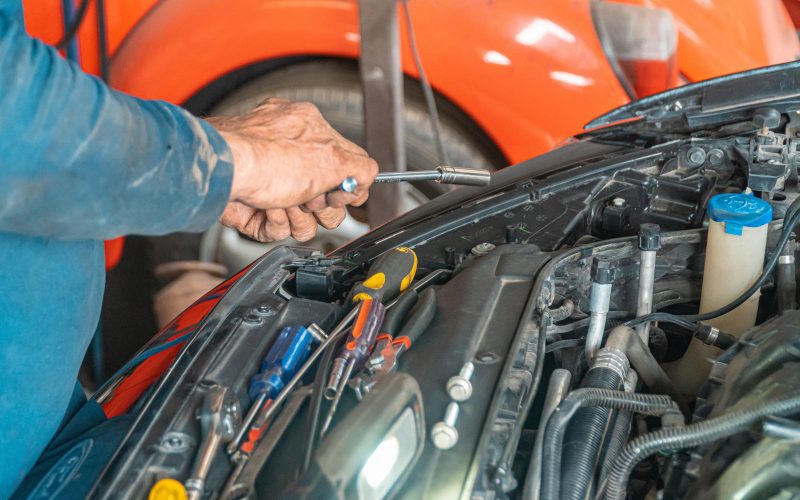Introduction:
Maintaining your car doesn’t have to be a daunting task. With the right knowledge and approach, anyone can become proficient in basic car maintenance. In this guide, we’ll demystify the process, providing easy-to-follow steps for every car owner. From routine check-ups to specialized care at the 30,000-mile mark, we’ve got you covered.
Explore More About Best Fuel-Efficient Cars Under 10K$

Routine Check-ups: The Foundation of Car Maintenance
Regular check-ups are the cornerstone of effective car maintenance. By staying proactive and addressing issues promptly, you can prevent costly repairs down the road. Here’s a breakdown of the key areas to focus on:
Engine Oil and Fluid Levels: Car Maintenance Guide
Regularly checking your engine oil and fluid levels is crucial for optimal engine performance and longevity. Engine oil lubricates moving parts, reducing friction and heat buildup. Low oil levels or dirty oil can lead to engine damage or failure. Follow these steps to ensure your engine stays well-lubricated:
- Locate the Dipstick: Park your car on level ground and wait for the engine to cool down. Locate the dipstick, usually labeled with a bright-colored handle, and pull it out.
- Wipe and Reinsert: Wipe the dipstick clean with a cloth or paper towel. Reinsert the dipstick fully, then pull it out again and check the oil level against the markings.
- Top Up if Necessary: If the oil level is below the minimum mark, add oil as needed, making sure not to overfill.
Tire Maintenance: Car Maintenance Guide

Proper tire maintenance is essential for safety and performance. Tires that are underinflated or worn out can affect handling, braking, and fuel efficiency. Follow these steps to keep your tires in top shape:
- Check Tire Pressure: Use a tire pressure gauge to check the pressure of each tire, including the spare. Refer to your vehicle’s manual or the sticker inside the driver’s side door jamb for the recommended pressure levels.
- Inspect Tread Depth: Check the tread depth of your tires regularly using a tread depth gauge or the penny test. Insert a penny into the tread groove with Lincoln’s head upside down. If you can see all of Lincoln’s head, it’s time to replace the tires.
Specialized Care: Reaching the 30,000-Mile Mark
When your car reaches the 30,000-mile milestone, it’s time for more specialized care. Certain components require attention to ensure continued reliability and performance.
Timing Belt Replacement
The timing belt plays a crucial role in the engine’s operation, synchronizing the rotation of the crankshaft and camshaft. Over time, the timing belt can wear out and lose tension, leading to potential engine damage if not replaced promptly. Here’s what you need to know:

- Schedule Replacement: Check your vehicle’s owner’s manual for the recommended timing belt replacement interval. It’s typically around 60,000 to 100,000 miles, but some manufacturers recommend replacement at 30,000 miles for certain models.
- Signs of Wear: Keep an eye out for signs of timing belt wear, such as fraying, cracking, or excessive slack. Addressing these issues promptly can prevent costly repairs down the road.
- Professional Service: Timing belt replacement is a complex task that requires precision and expertise. It’s best to have it done by a qualified mechanic to ensure it’s done correctly.
Conclusion:
By following these easy steps and staying proactive with your car maintenance, you can ensure smooth rides and extend the lifespan of your vehicle. Don’t let maintenance tasks overwhelm you—take charge and keep your car running smoothly for miles to come.












